We live in a wondrous world filled with marvels all around us, but sometimes we forget. Getting caught up in our daily lives, most people barely stop to smell the roses, much less open the roses to look inside. Well, it turns out that there are beautiful secrets hidden underneath and inside things you would never even think to take a closer look at.
A lion’s fur is gorgeous on the outside, but have you ever seen the intricate pattern that sits beneath? Or how about the quarry where they mine the marble for your countertops?
The following list is another collection of rare photos showing the unseen side of things around us. If something catches your eye, don’t forget to upvote your favorite!
01. This Is What A Cleaned Heart Looks Like
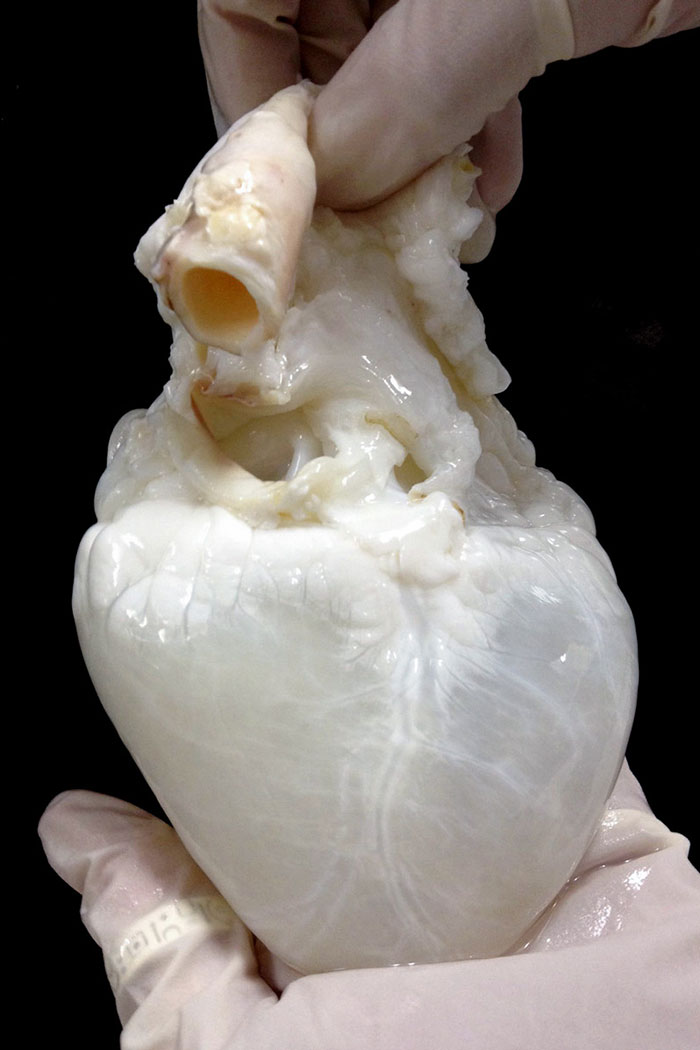 A ghost heart is obtained by washing away all donor cells until you’re left with a protein scaffold. This ghost heart is ready to be injected with a transplant recipient’s stem cells so a new heart that won’t be rejected can be grown.
A ghost heart is obtained by washing away all donor cells until you’re left with a protein scaffold. This ghost heart is ready to be injected with a transplant recipient’s stem cells so a new heart that won’t be rejected can be grown.
02. The Giant Heads Of Easter Island Do Have Bodies
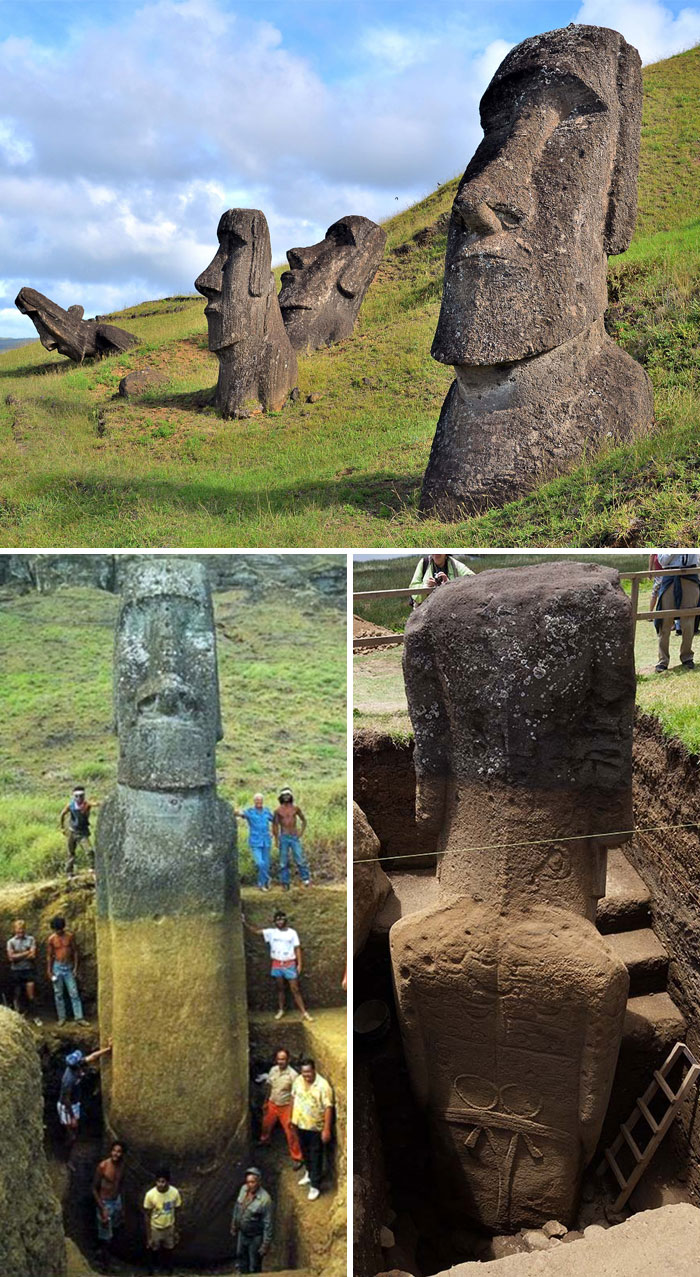 The ancient and mysterious ‘Easter Island Heads’ were carved from rock between A.D. 1100 and 1500 by ancient Polynesians. Their traditional name is ‘moai,’ but most people know them as giant heads, which is why it is often shocking when it’s discovered they have bodies. “The reason people think they are [only] heads is there are about 150 statues buried up to the shoulders on the slope of a volcano, and these are the most famous, most beautiful, and most photographed of all the Easter Island statues,” Van Tilburg, who is also a fellow at the Cotsen Institute of Archaeology at the University of California, Los Angeles, told Life’s Little Mysteries.eisp.org
The ancient and mysterious ‘Easter Island Heads’ were carved from rock between A.D. 1100 and 1500 by ancient Polynesians. Their traditional name is ‘moai,’ but most people know them as giant heads, which is why it is often shocking when it’s discovered they have bodies. “The reason people think they are [only] heads is there are about 150 statues buried up to the shoulders on the slope of a volcano, and these are the most famous, most beautiful, and most photographed of all the Easter Island statues,” Van Tilburg, who is also a fellow at the Cotsen Institute of Archaeology at the University of California, Los Angeles, told Life’s Little Mysteries.eisp.org
03. Grains Of Salt Under Electron Microscope
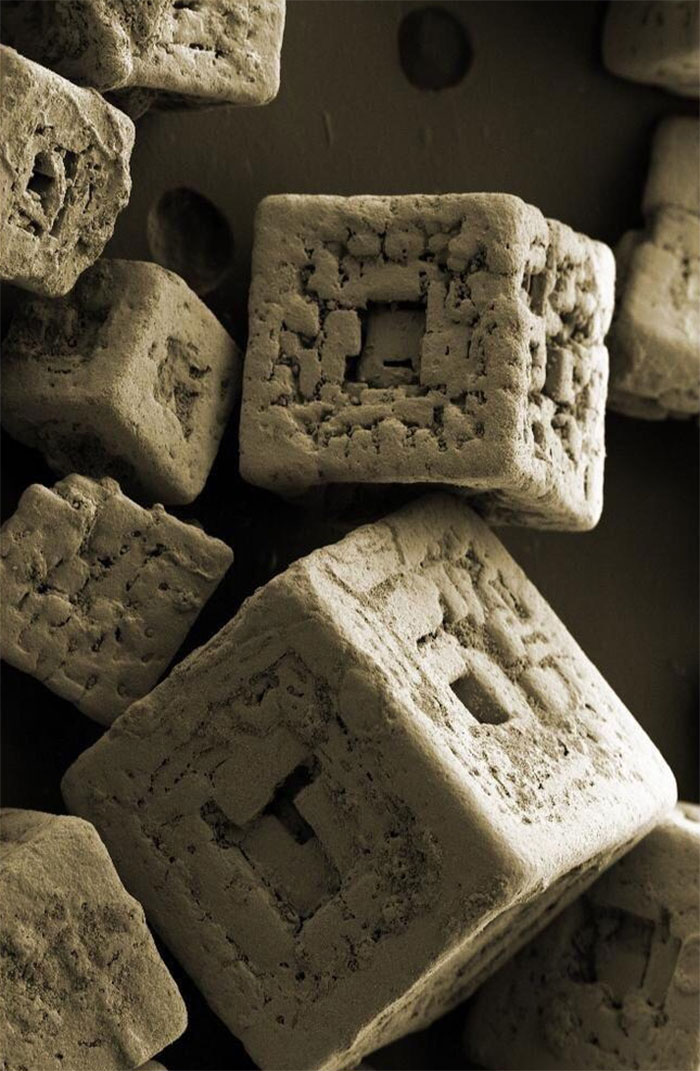 This ionic compound is made up of sodium and chloride atoms. When several of these molecules join to form a crystal, they often arrange themselves in a cubic pattern. Salt crystals are cubic, but some grains appear to be made up of overlapping cubes when observed.
This ionic compound is made up of sodium and chloride atoms. When several of these molecules join to form a crystal, they often arrange themselves in a cubic pattern. Salt crystals are cubic, but some grains appear to be made up of overlapping cubes when observed.
04. This Is What A Baby Flamingo Looks Like
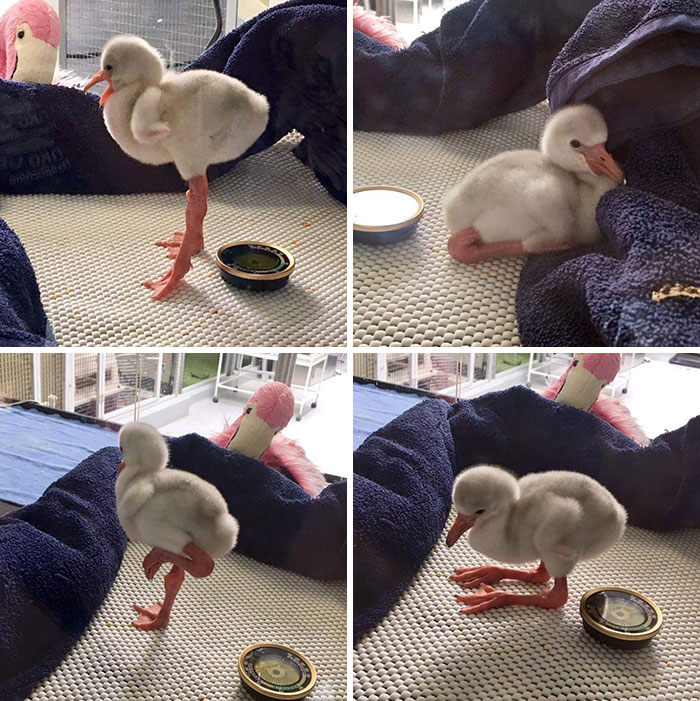 These fluffy little creatures are baby flamingos, which may confuse some as they lack their infamous pink color. Babies of this species are fed bright red milk from their parents’ upper digestive tracts. As they grow up, they begin to develop their characteristic pink feathers. Adult flamingos feed on red and blue-green algae filled with beta carotene, an organic chemical with a reddish-orange pigment. The digestive track system of flamingos extracts the pigment and eventually dissolves it into fats. These fats are deposited into new feathers for full-on pretty in pink transformation.
These fluffy little creatures are baby flamingos, which may confuse some as they lack their infamous pink color. Babies of this species are fed bright red milk from their parents’ upper digestive tracts. As they grow up, they begin to develop their characteristic pink feathers. Adult flamingos feed on red and blue-green algae filled with beta carotene, an organic chemical with a reddish-orange pigment. The digestive track system of flamingos extracts the pigment and eventually dissolves it into fats. These fats are deposited into new feathers for full-on pretty in pink transformation.
05. This Is An Intact Human Nervous System
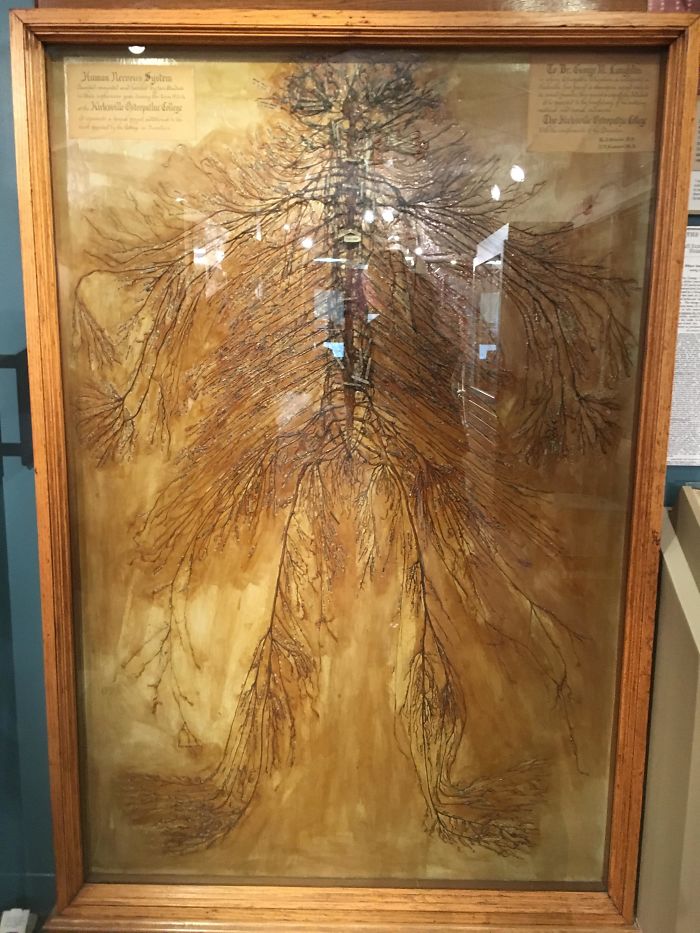 In 1925 two medical students in Kirksville, Missouri, were challenged to dissect a cadaver’s nervous system, starting from the brain downward but leaving the entire system in one piece. The process took the students – M.A. Schalck and L.P. Ramsdell-over 1,500 hours. Their “blood, sweat, and tears” produced this extraordinary display at the Museum of Osteopathic Medicine at A.T. Still University (ATSU) in Kirksville. There are only 4 of these in the world.
In 1925 two medical students in Kirksville, Missouri, were challenged to dissect a cadaver’s nervous system, starting from the brain downward but leaving the entire system in one piece. The process took the students – M.A. Schalck and L.P. Ramsdell-over 1,500 hours. Their “blood, sweat, and tears” produced this extraordinary display at the Museum of Osteopathic Medicine at A.T. Still University (ATSU) in Kirksville. There are only 4 of these in the world.
06. Large Ice Crystals In Switzerland
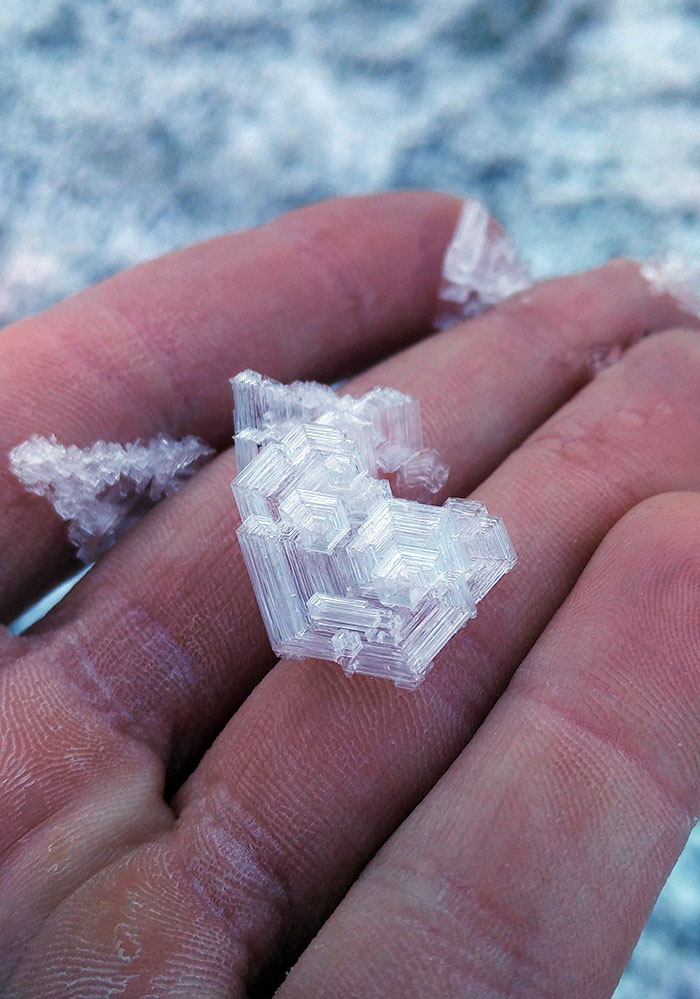 Ice crystal precipitation varies in shape, intensity, and size but is found in cold regions worldwide. “In the absence of supercooled liquid water, the growth of ice crystals to precipitation size is most likely dominated by aggregation of smaller ice crystals, which depends on the ice crystal number concentration and temperature (Hobbs et al. 1974),” as you can see in the image below.
Ice crystal precipitation varies in shape, intensity, and size but is found in cold regions worldwide. “In the absence of supercooled liquid water, the growth of ice crystals to precipitation size is most likely dominated by aggregation of smaller ice crystals, which depends on the ice crystal number concentration and temperature (Hobbs et al. 1974),” as you can see in the image below.
07. Aurora Of Different Planets
 Aurora’s are breathtaking cosmic light displays that can be seen from various planets in our solar system. An aurora is a finale to a process that begins with the sun. The sun emits a constant stream of charged particles or solar wind into the solar system. When these winds reach a planet, they interact with the magnetic field that surrounds it and compress the area into a teardrop shape.
Aurora’s are breathtaking cosmic light displays that can be seen from various planets in our solar system. An aurora is a finale to a process that begins with the sun. The sun emits a constant stream of charged particles or solar wind into the solar system. When these winds reach a planet, they interact with the magnetic field that surrounds it and compress the area into a teardrop shape.
How the magnetic field change causes the charged particles to accelerate into the upper atmosphere, colliding with molecules such as nitrogen and oxygen, which gives off energy in the form of light. A light ribbon of color is displayed across the sky in an aurora.
08. This Is What A Tiger’s Skin Looks Like When It’s Shaved
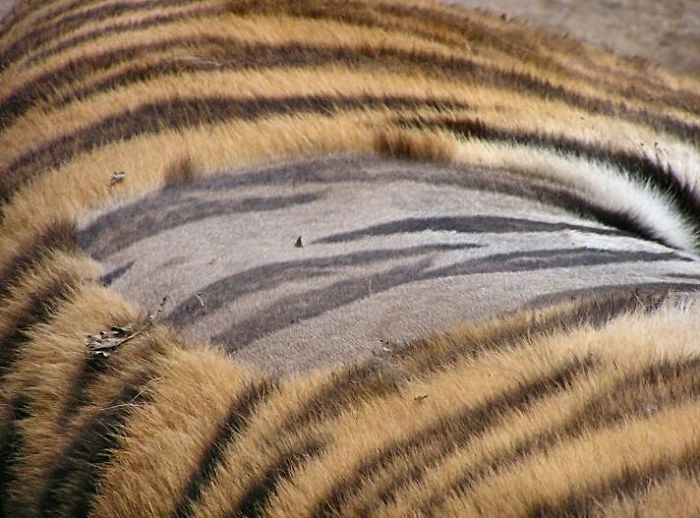 Each tiger has a unique pattern of stripes that are ideal for the camouflage needs of the animal.
Each tiger has a unique pattern of stripes that are ideal for the camouflage needs of the animal.
09. You Can See Every Organ In The Glass Frog
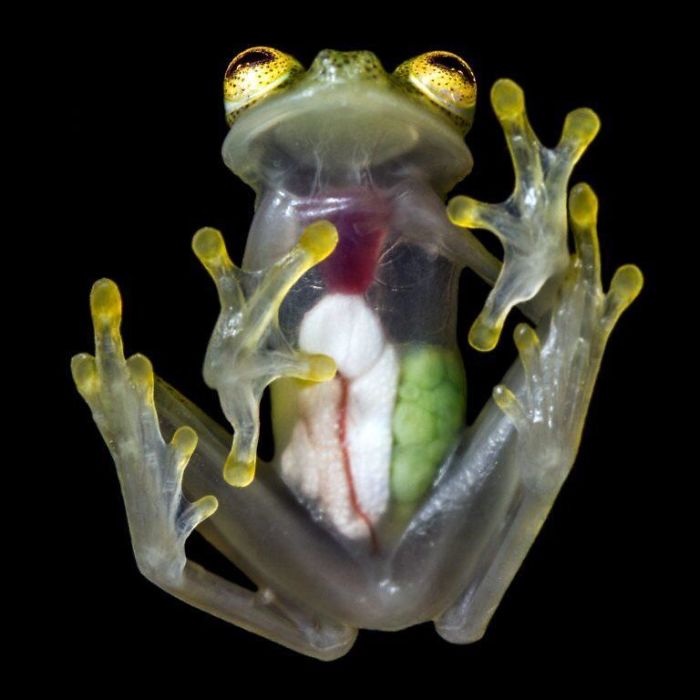 Reticulated glass frogs are found in the rain forests of Costa Rica, Panama, Colombia, and Ecuador. The skin on their underside is entirely transparent, allowing you to see their internal organs and even their beating heart. Scientists still don’t know the evolutionary reason behind their see-through skin but think the pattern on their backs are meant to resemble eggs and confuse predators.
Reticulated glass frogs are found in the rain forests of Costa Rica, Panama, Colombia, and Ecuador. The skin on their underside is entirely transparent, allowing you to see their internal organs and even their beating heart. Scientists still don’t know the evolutionary reason behind their see-through skin but think the pattern on their backs are meant to resemble eggs and confuse predators.
10. This Globe For Blind People
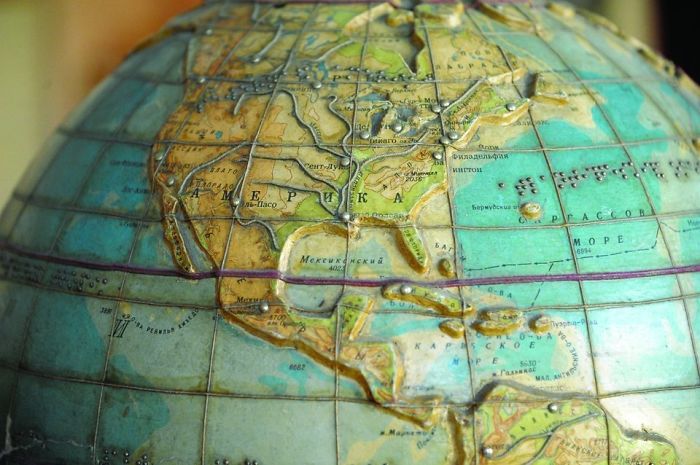 In 1830 an engineer and craftsman by the name of Stephen Preston Ruggles took on a project for the print shop at Perkins School for the Blind in Watertown, Massachusetts. He created a map of Boston with the streets, roads, bridges, and squares marked with wooden divots.
In 1830 an engineer and craftsman by the name of Stephen Preston Ruggles took on a project for the print shop at Perkins School for the Blind in Watertown, Massachusetts. He created a map of Boston with the streets, roads, bridges, and squares marked with wooden divots.
For centuries blind people had no formal way to learn geography, and this was one of the earliest archived attempts. In 1837 Samuel Gridley Howe, the school’s Founding Director, and Ruggles re-invented the method and created a way of embossing maps, releasing the Atlas of the United States Printed for the use of the Blind.
11. An Agate Shell. Minerals Have Grown In The Voids Of The Shell And Eventually Replaced The Shell Too
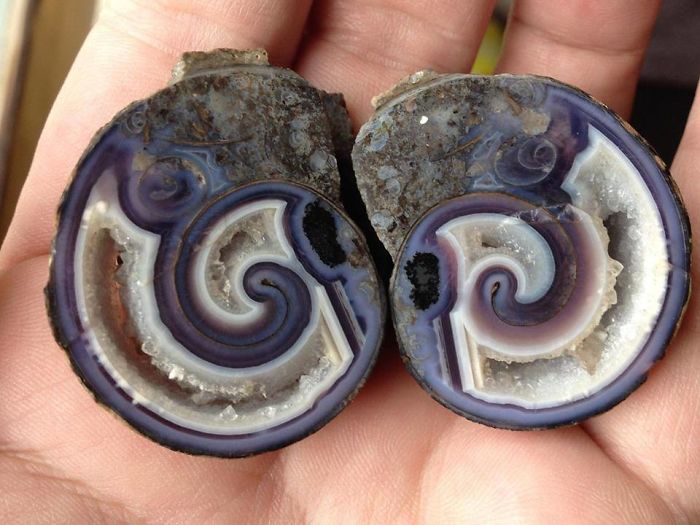 Found mainly on West Coast beaches, they’re not that rare and usually end up in home collections. But that doesn’t diminish their beauty one bit!
Found mainly on West Coast beaches, they’re not that rare and usually end up in home collections. But that doesn’t diminish their beauty one bit!
12. Here’s What An Albino Raccoon Looks Like
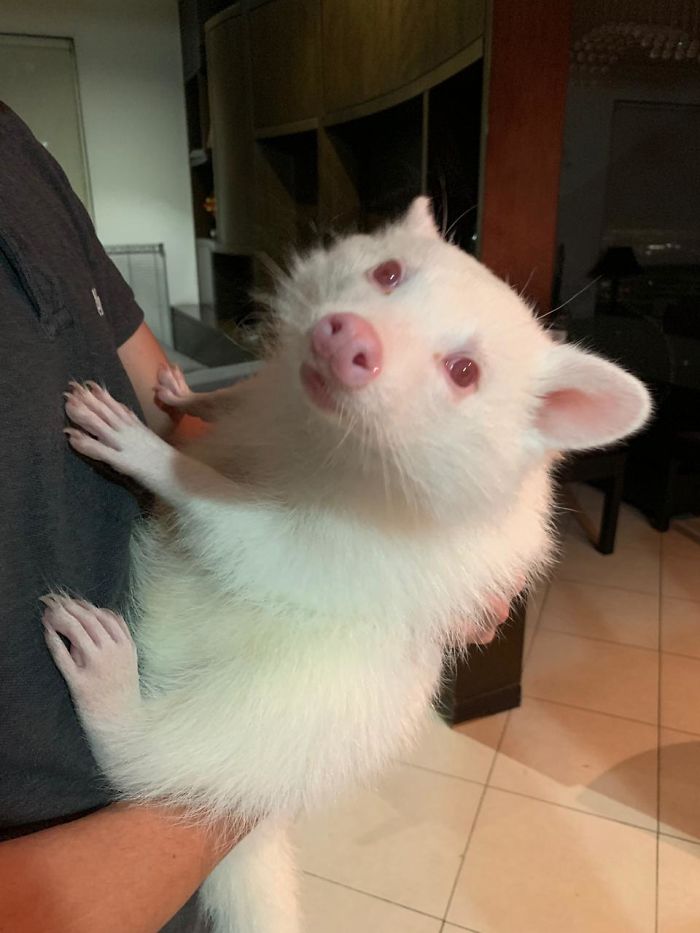 Albinism is a congenital disease that causes either partial or complete loss of pigmentation in an animal. Raccoons are known for their black and white bandit look, which makes this albino creature an anomaly. Unlike their friends, albino raccoons lack camouflage, making hiding from predators difficult and thus their lifespan shorter.
Albinism is a congenital disease that causes either partial or complete loss of pigmentation in an animal. Raccoons are known for their black and white bandit look, which makes this albino creature an anomaly. Unlike their friends, albino raccoons lack camouflage, making hiding from predators difficult and thus their lifespan shorter.
13. The Dark Side Of The Moon Passing In Front Of The Earth, Captured From One Million Miles Away
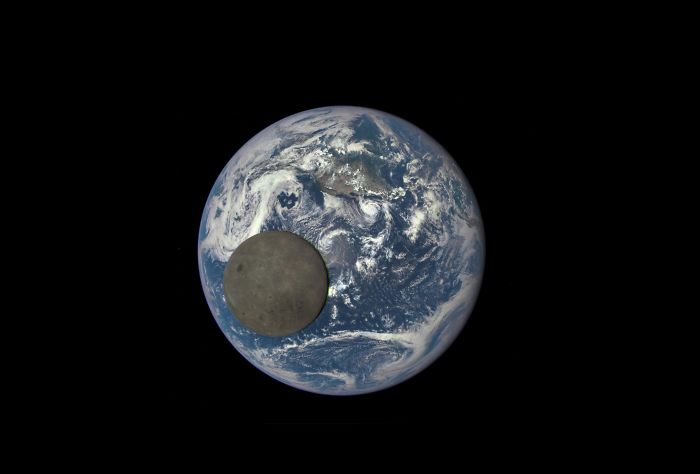 A NASA camera aboard the Deep Space Climate Observatory (DSCOVR) has captured a unique view of the Moon as it passed between the spacecraft and Earth. A series of test images shows the fully illuminated “dark side” of the Moon that is not visible from Earth.
A NASA camera aboard the Deep Space Climate Observatory (DSCOVR) has captured a unique view of the Moon as it passed between the spacecraft and Earth. A series of test images shows the fully illuminated “dark side” of the Moon that is not visible from Earth.
14. Some 5-Pointed Starfish Can Be Squared Due To Birth Defects
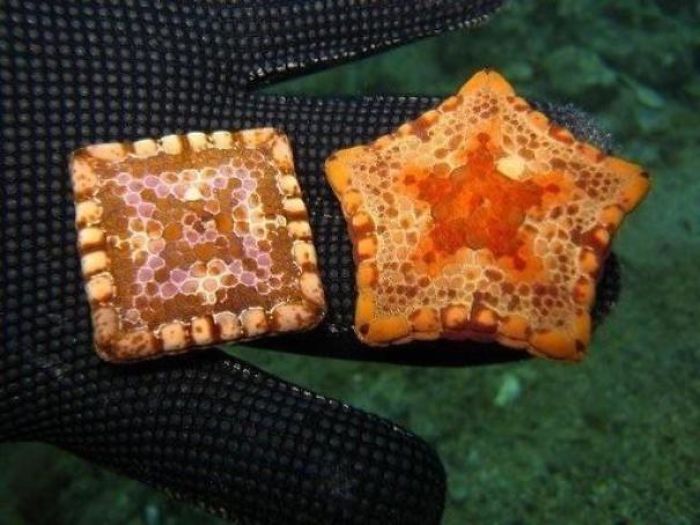 Did you know that there are about 1,500 species of starfish that we know? From the tropics to frigid polar waters, they are found from the intertidal zone down to abyssal depths, 6,000 m (20,000 ft) below the surface.
Did you know that there are about 1,500 species of starfish that we know? From the tropics to frigid polar waters, they are found from the intertidal zone down to abyssal depths, 6,000 m (20,000 ft) below the surface.
15. What Thousands Of Years Look Like In One Photo (Dun Briste Sea Stack, Downpatrick Head, Co. Mayo, Ireland)
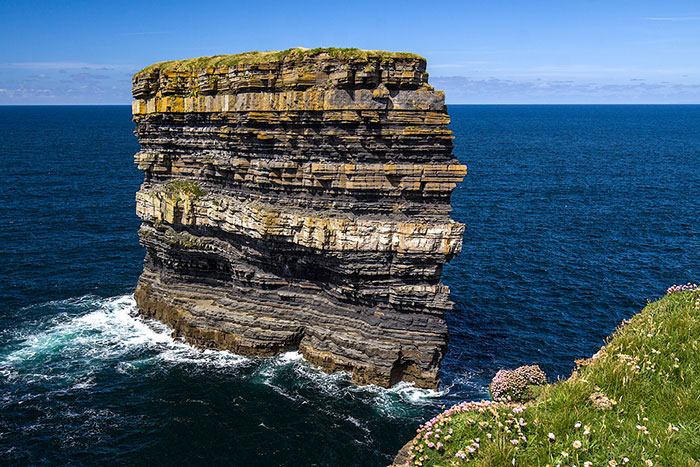 Living 50 meters off the north Mayo coast at Downpatrick Head sits the 45-meter high flat-topped sea stack Dún Briste (the Broken Fort). The summit of the pile is approximately 50 meters long and 15 meters across the center. Interestingly, this is considered a relatively new sea stack as it was only separated from mainland Ireland in 1393 when monster seas severed it from County Mayo in an overnight storm.
Living 50 meters off the north Mayo coast at Downpatrick Head sits the 45-meter high flat-topped sea stack Dún Briste (the Broken Fort). The summit of the pile is approximately 50 meters long and 15 meters across the center. Interestingly, this is considered a relatively new sea stack as it was only separated from mainland Ireland in 1393 when monster seas severed it from County Mayo in an overnight storm.
This flat-topped stack contains the remains of the buildings where people lived on the night of the great storm. In 1980 three scientists landed on the summit by helicopter and spent a couple of hours examining the remains of the buildings and plant life still surviving there. They discovered the remains of a building running across the center of the headland with enough details left to say that both people and livestock lived together inside it.
16. Snow-Covered Net Roof Of The Aviary In The Zoo
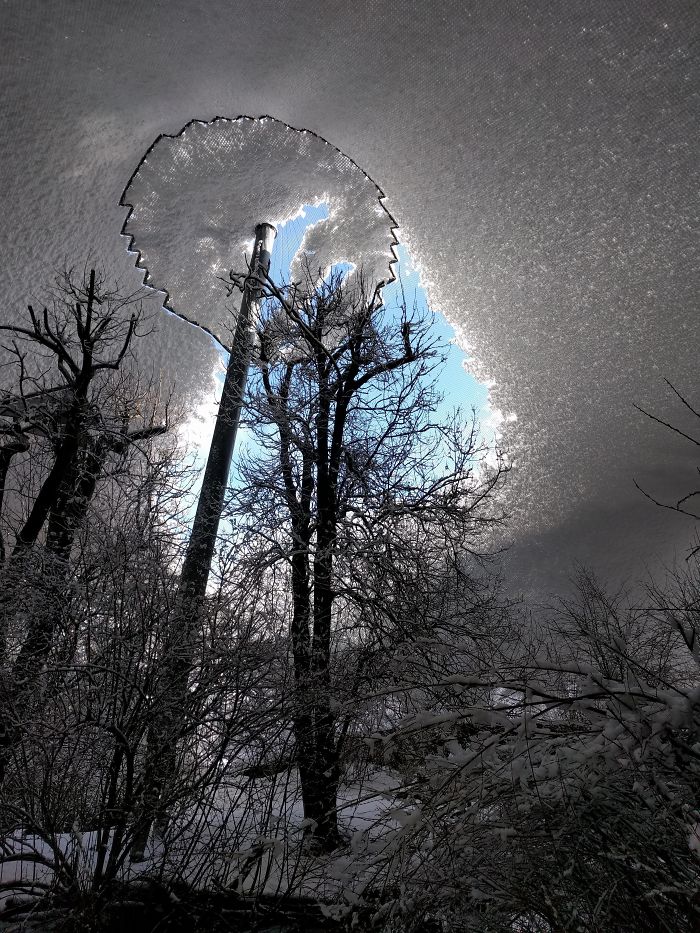 The first walk-through aviary was built for the St. Louis World’s fair in 1904 by the Smithsonian Institute. It was considered the largest of its kind at the time and was bought by the Saint Louis Zoo, where it remains to this day. Proper aviary construction for zoos requires veterinary involvement due to animal health and husbandry concerns.
The first walk-through aviary was built for the St. Louis World’s fair in 1904 by the Smithsonian Institute. It was considered the largest of its kind at the time and was bought by the Saint Louis Zoo, where it remains to this day. Proper aviary construction for zoos requires veterinary involvement due to animal health and husbandry concerns.
17. Microbes Left Behind From The Handprint Of An 8-Year-Old Boy After Playing Outside
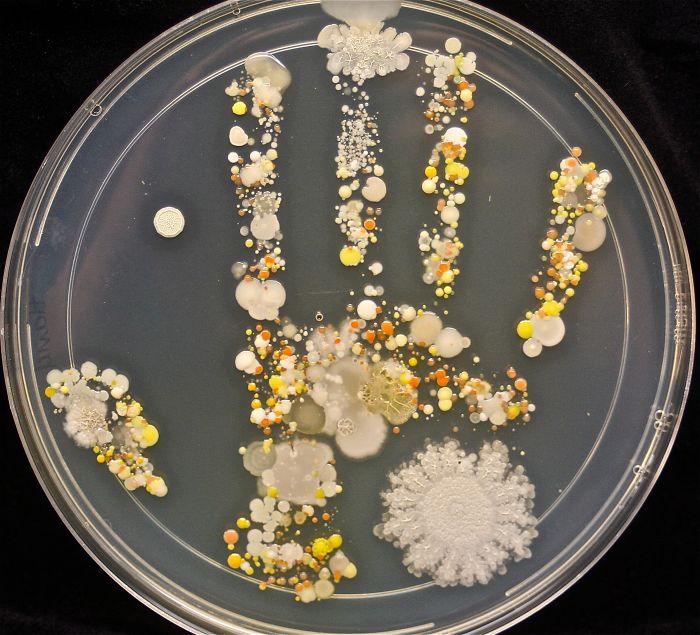 But before you freak out and lock yourself inside, remember that most germs won’t harm you. Your immune system protects you against infectious agents. And growing up in ‘natural’ environments helps kids develop a balanced immune response.
But before you freak out and lock yourself inside, remember that most germs won’t harm you. Your immune system protects you against infectious agents. And growing up in ‘natural’ environments helps kids develop a balanced immune response.
18. Giant Amethyst Geode
 Geodes are hollow rocks containing inward-facing crystals formed by numerous different processes, namely a slow flow of mineral material into pockets of air within stones. One of the most renowned regions for amethyst mineralization and geode mining is the Artigas region of Uruguay.
Geodes are hollow rocks containing inward-facing crystals formed by numerous different processes, namely a slow flow of mineral material into pockets of air within stones. One of the most renowned regions for amethyst mineralization and geode mining is the Artigas region of Uruguay.
According to the Guinness Book of World Records, The largest amethyst geode weighs 13,000 kg (28,660 lb) and is 3 m (9 ft 10 in) long, 1.8 m (5 ft 10 in) wide, and 2.2 m (7 ft 2 in) high. It is displayed in the Shandong Tianyu Museum of Natural History (China) in Shandong, China.
19. What’s Under A Reporter’s Back: “Our Job Is So Glamorous.”
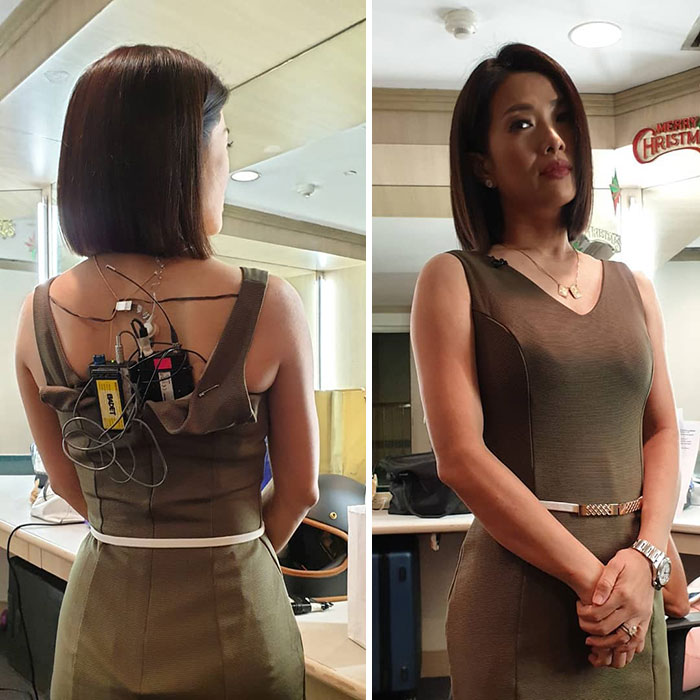 This journalist has a receiver for the In-Ear piece, which allows her to hear the team, and a transmitter used for her clip-on microphone, both meticulously fastened to her dress so viewers wouldn’t notice anything.
This journalist has a receiver for the In-Ear piece, which allows her to hear the team, and a transmitter used for her clip-on microphone, both meticulously fastened to her dress so viewers wouldn’t notice anything.
20. Processed Image Of An Actual Virus Via Electron Microscope
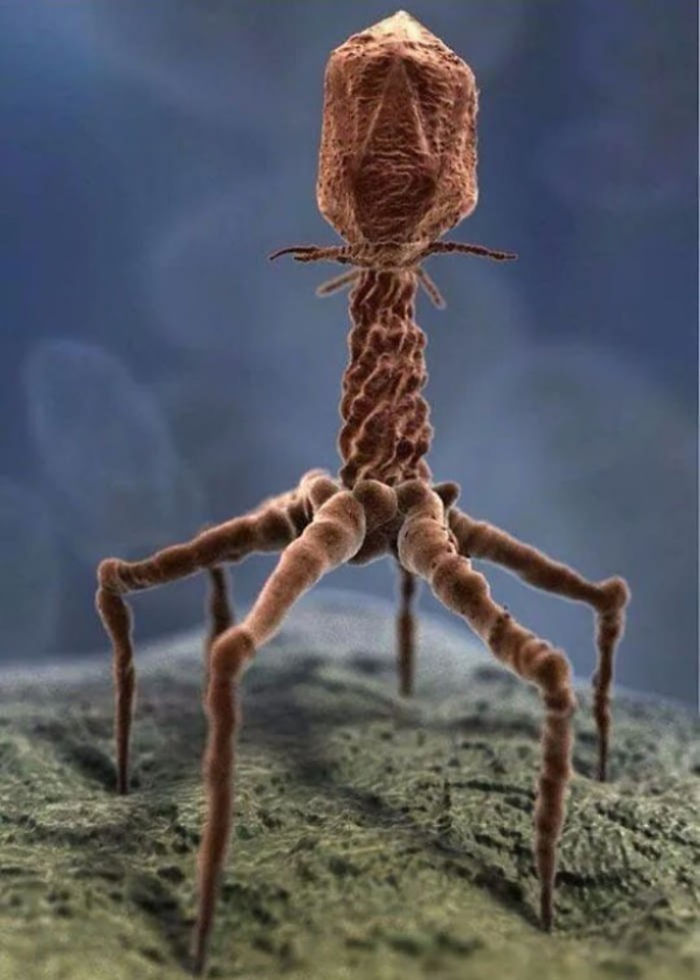 This scary-looking creature from the family of bacteriophages, or phages for short. Discovered independently by Frederick Twort in 1915 and Félix d’Herelle in 1917, phages were used to treat cholera by scientists who did not yet know how they worked.
This scary-looking creature from the family of bacteriophages, or phages for short. Discovered independently by Frederick Twort in 1915 and Félix d’Herelle in 1917, phages were used to treat cholera by scientists who did not yet know how they worked.
In 1940, phages were seen under an electron microscope, and scientists realized how they work. This virus infects bacteria and cannot survive or reproduce without it. Once they invade a host cell, they can consume the host’s nutrients and reproduce.
21. This Is What An Empty Boeing 787 Looks Like
 The Boeing 787 is the ‘Dreamliner,’ and its variants seat 242 to 335 passengers. The 787 was designed to be 20% more fuel-efficient than the Boeing 767, which it was intended to replace.
The Boeing 787 is the ‘Dreamliner,’ and its variants seat 242 to 335 passengers. The 787 was designed to be 20% more fuel-efficient than the Boeing 767, which it was intended to replace.
While Boeing isn’t having a great time right now, with grave safety concerns over its new 737 max 8, the Dreamliner has been a commercial success. Still, it wasn’t all plain sailing; the aircraft suffered several in-service problems related to its lithium-ion batteries, including fires on board during commercial service.
This resulted in the FAA grounding all 787s in the U.S. in 2013, with other civil aviation authorities following suit. The battery design was revised, and the Dreamliner was back in the skies within a few weeks.
22. This Is What An Elephant’s Tail Looks Like Up Close
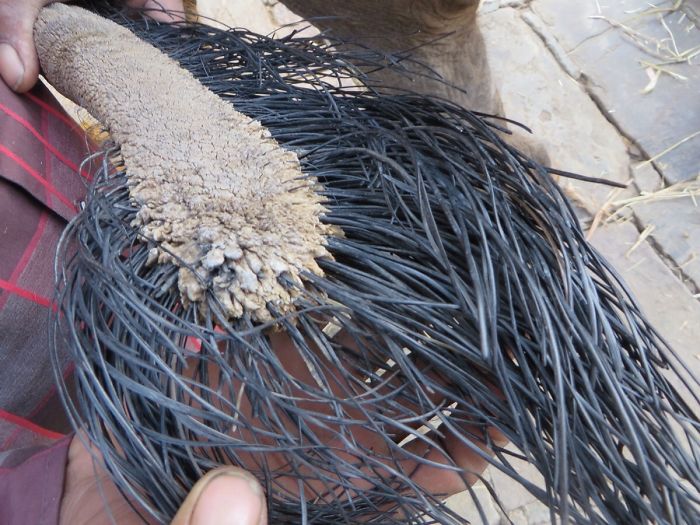 Elephant’s tails have a few uses. For example, elephants can use their tails to communicate with each other; much like a dog, a swishing or wagging tail can signify happiness or excitement.
Elephant’s tails have a few uses. For example, elephants can use their tails to communicate with each other; much like a dog, a swishing or wagging tail can signify happiness or excitement.
Baby elephants sometimes hold on to older animals’ tails while walking for guidance and security on long walks. The tail full of hair also works as a flyswatter to help keep those annoying and biting flies away.
23. What A Salt Mine Looks Like From The Inside
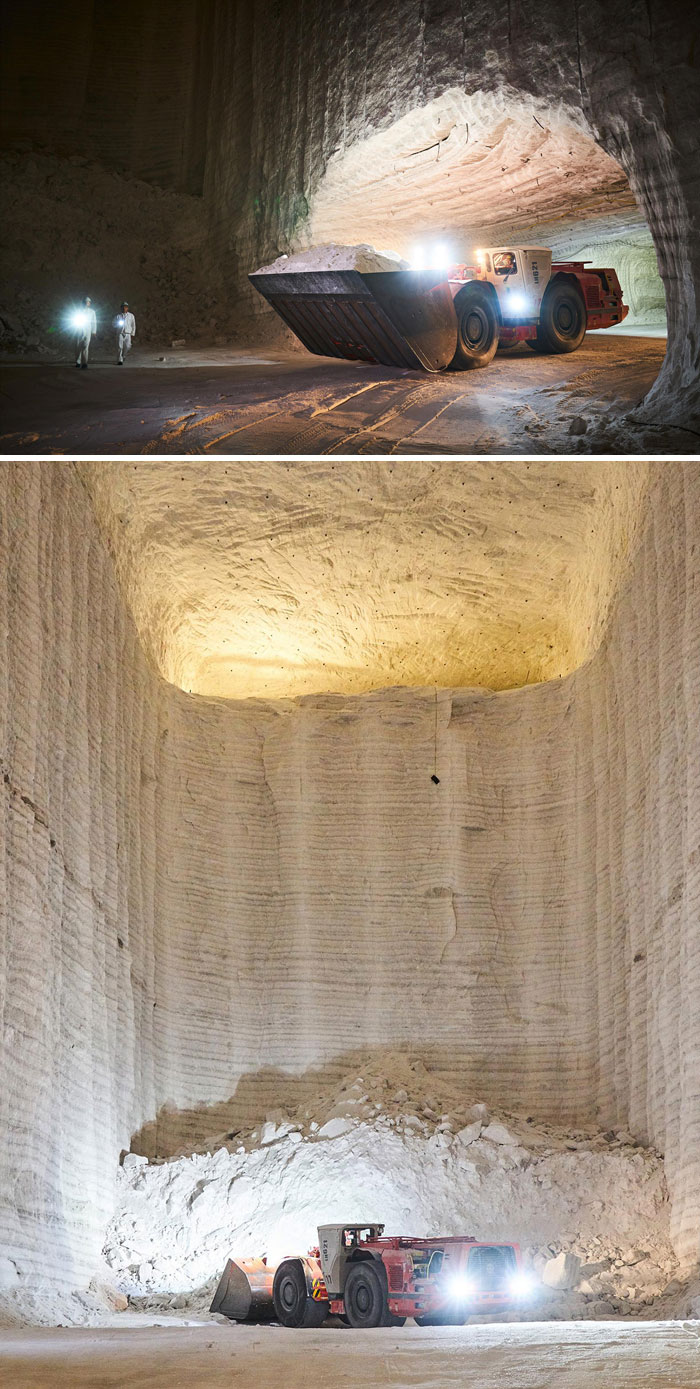 Before engines and earth-moving equipment were invented, mining salt was one of the most expensive and dangerous things to do. While salt was now plentiful, until the Industrial Revolution, it was challenging to come by, and salt mining was often done by enslaved people or prison labor. Life expectancy among those sentenced was low.
Before engines and earth-moving equipment were invented, mining salt was one of the most expensive and dangerous things to do. While salt was now plentiful, until the Industrial Revolution, it was challenging to come by, and salt mining was often done by enslaved people or prison labor. Life expectancy among those sentenced was low.
In Roman times, salt on the table was a mark of wealth; so valuable was this resource that soldier’s pay was originally in salt. This is where the word ‘salary’ comes from.
24. The Inside Of A Space Suit
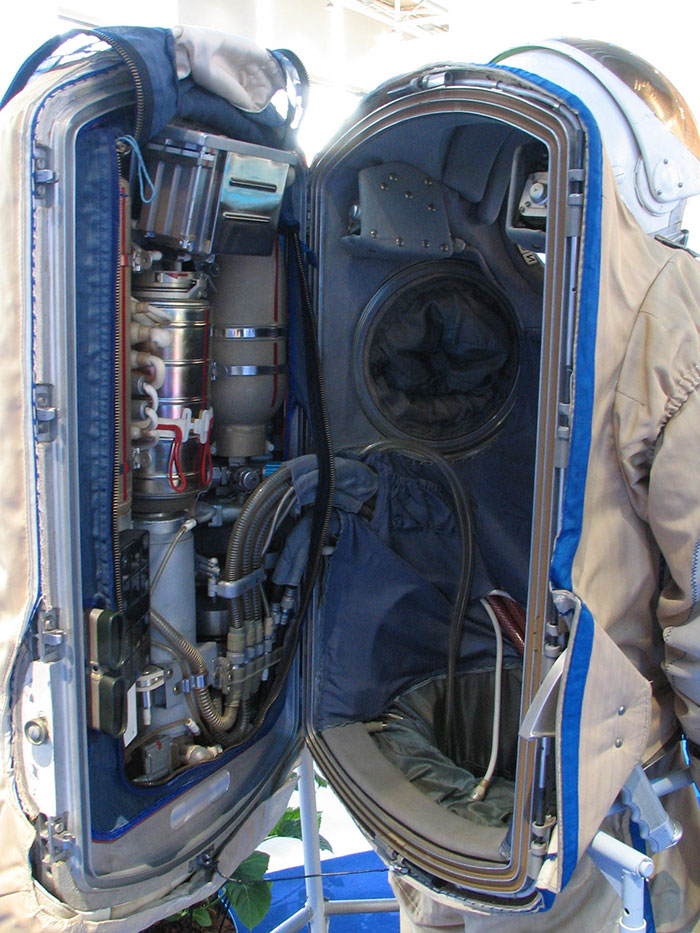 Here are some interesting facts about spacesuits, according to NASA:
Here are some interesting facts about spacesuits, according to NASA:
1. A spacesuit weighs approximately 280 pounds on the ground – without the astronaut. In the microgravity environment of space, a spacesuit weighs nothing.
2. Putting on a spacesuit takes 45 minutes, including the time it takes to put on the special undergarments that help keep astronauts cool. After putting on the spacesuit, the astronaut must spend more than an hour breathing pure oxygen before going outside the pressurized module to adapt to the lower pressure maintained in the suit.
3. The reason that spacesuits are white is because white reflects heat in space the same as it does here on Earth. Temperatures in direct sunlight in space can be more than 275 degrees Fahrenheit.
4. No difference exists in a male’s or female’s suit, though the female astronaut usually requires a smaller size.
5. The shuttle spacesuit was designed to be made of many interchangeable parts, accommodating many astronauts with widely varying body sizes. These parts (upper and lower torsos, arms, etc.) are made in different sizes.
6. The body measurements of each shuttle astronaut are taken and recorded. Then the measurements are plotted against the size ranges available for each spacesuit component. The suit components are then assembled. Training suits are usually assembled nine months before the flight, and flight suits are generally made four months before the flight.
25. ‘Baby Driver’ Behind The Scenes: While Actors Are Busy Performing, The Real Driver Is On Top Of The Car
 In Baby Driver, the red Subaru WRX becomes the show’s star as it weaves in and out of lanes, and fits through imperceptible gaps between bumper-to-bumper traffic, jumps barriers, and skids around obstacles like a lucky drunk on ice.
In Baby Driver, the red Subaru WRX becomes the show’s star as it weaves in and out of lanes, and fits through imperceptible gaps between bumper-to-bumper traffic, jumps barriers, and skids around obstacles like a lucky drunk on ice.
Edgar Wright, the writer and director of the movie brought together a team of experts to coordinate incredibly complicated chases that he was determined to shoot on location in Atlanta. He estimates that 95 percent of the movie was shot in-camera, with CGI utilized for just a few touch-ups and quick shots.
26. What An Eclipse Looks Like From Space
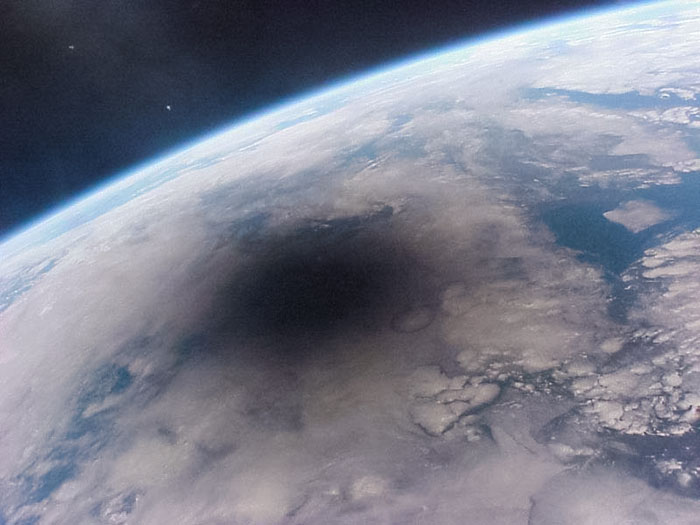 This photo was uploaded onto the Astronomy Picture of the Day and showed the shadow of the Moon’s darkening part of the Earth. A crew took it on the former Mir space station, and it is estimated that the shadow moved across the Earth at nearly 2000 kilometers per hour.
This photo was uploaded onto the Astronomy Picture of the Day and showed the shadow of the Moon’s darkening part of the Earth. A crew took it on the former Mir space station, and it is estimated that the shadow moved across the Earth at nearly 2000 kilometers per hour.
“Only observers near the center of the dark circle see a total solar eclipse – others see a partial eclipse where only part of the Sun appears blocked by the Moon,” APOD explained. “This spectacular picture of the 1999 August 11 solar eclipse was one of the last ever taken from the Mir space station. The two bright spots on the upper left are possibly Jupiter and Saturn, although this has yet to be proven. Mir was deorbited in a controlled re-entry in 2001.”
27. The Way This Dead Cactus Decomposed, Leaving Only The Spines Behind
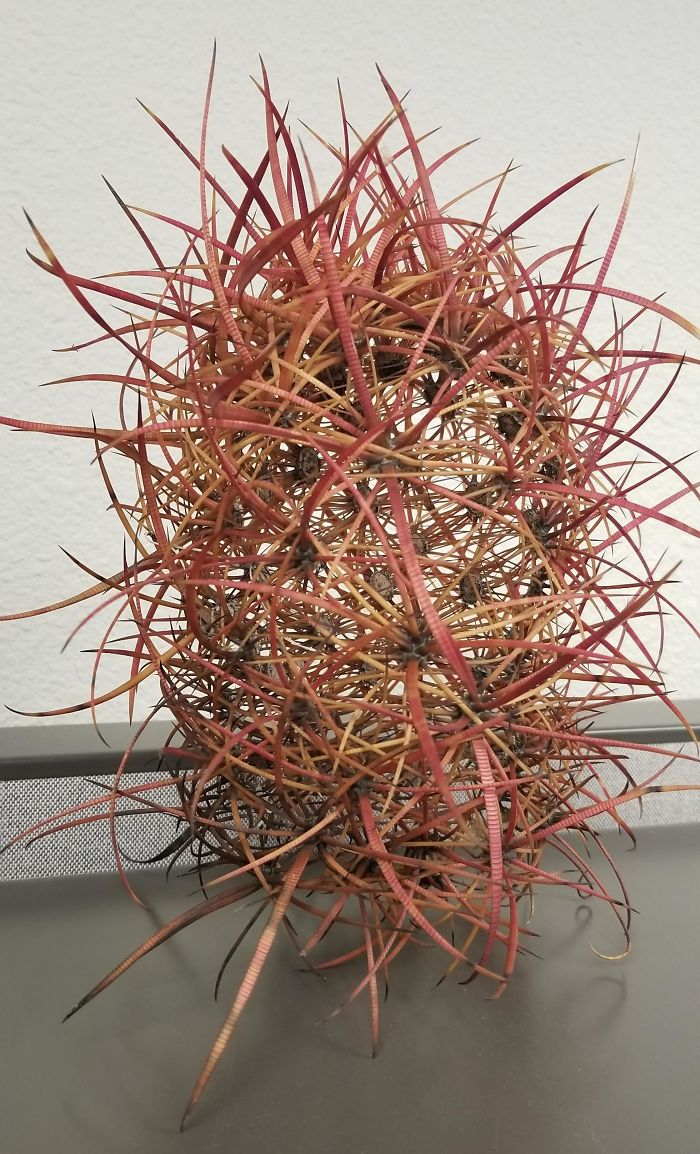 According to its owner, it was a wild, not potted cactus, and the spines are 2-4″ long. They also say those spines were so sharp that they stabbed them even when they used oven mitts to repot the plant!
According to its owner, it was a wild, not potted cactus, and the spines are 2-4″ long. They also say those spines were so sharp that they stabbed them even when they used oven mitts to repot the plant!
28. Sperm Whales (The Largest Toothed Predators On Earth) Do Not Have Teeth In Their Upper Jaw, But Sockets That Their Lower Teeth Fit Into
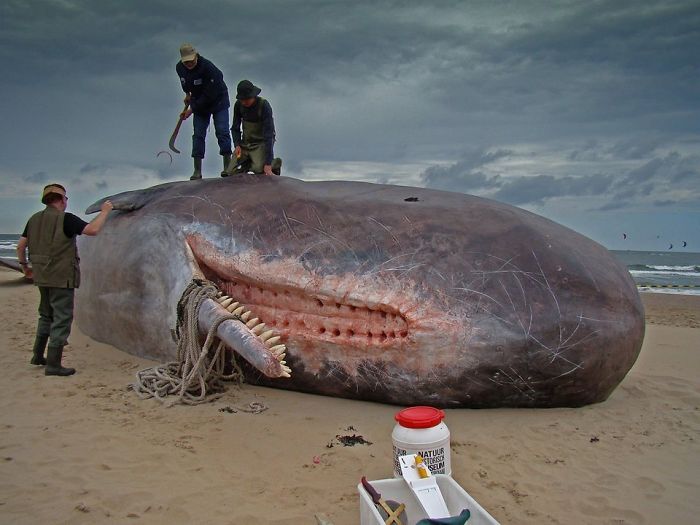 Sperm whales are the largest among the toothed whales and have heads that are one-third the animal’s length. These big-headed whales have 20-26 pairs of cone-shaped teeth along their lower jaw but none on the top.
Sperm whales are the largest among the toothed whales and have heads that are one-third the animal’s length. These big-headed whales have 20-26 pairs of cone-shaped teeth along their lower jaw but none on the top.
While this may seem bizarre for eating, it is strange that sperm whales have teeth. Their primary food item is the giant squid, which they don’t chew but slurp up.
29. Strawberry’s Surface
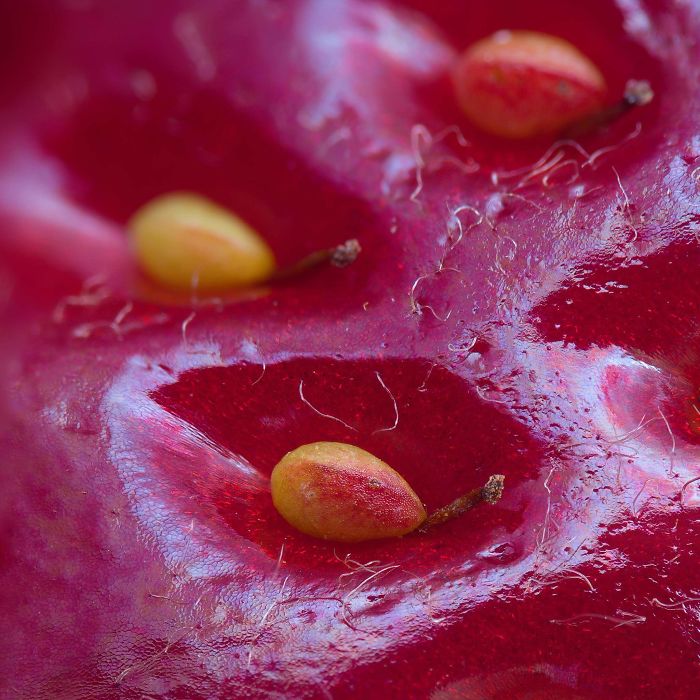 This macro photograph shows the individual seeds on the skin of a strawberry. Strawberry “seeds” are the ovaries of the berry that hold the actual seeds inside. The photographer, Alexey Kljatov, wrote on Flickr that the photo was created by: “Focus stacking + averaging (10 groups with a different focus, each group contains eight identical shots for averaging). The problem with this shot was that strawberry is too glossy (I put a white plastic bag around berry to diffuse daylight).”
This macro photograph shows the individual seeds on the skin of a strawberry. Strawberry “seeds” are the ovaries of the berry that hold the actual seeds inside. The photographer, Alexey Kljatov, wrote on Flickr that the photo was created by: “Focus stacking + averaging (10 groups with a different focus, each group contains eight identical shots for averaging). The problem with this shot was that strawberry is too glossy (I put a white plastic bag around berry to diffuse daylight).”
30. This Fossilized Dinosaur Foot Print I Saw In Utah
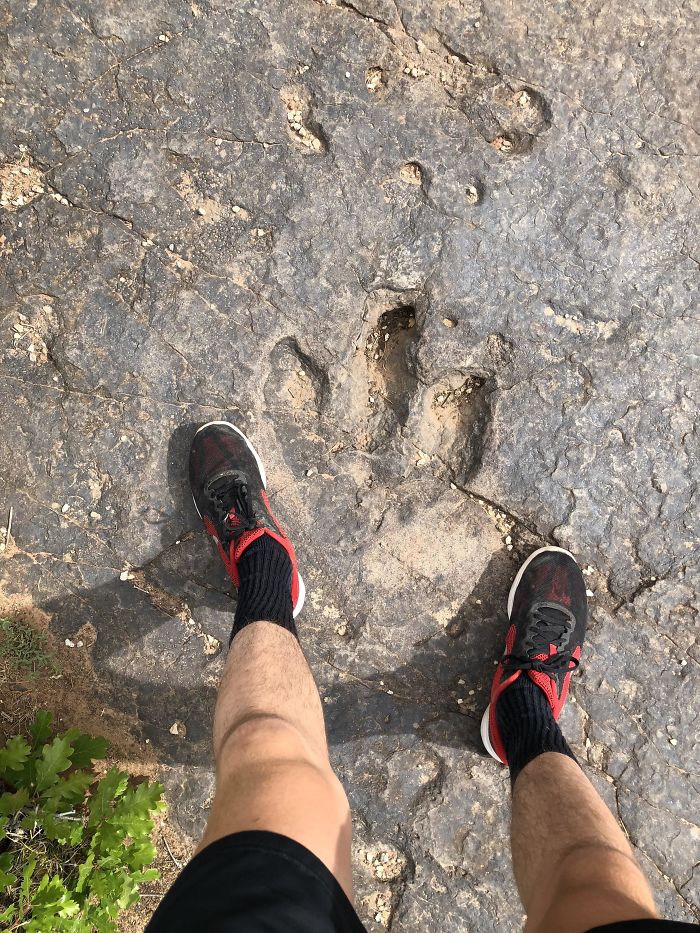 These prints lie in The Bull Canyon Dinosaur Track Trail. It’s a short trail with a great viewpoint of Fisher Valley. The tracks are of a Therapod, likely something similar to a Velociraptor made famous in the Jurassic Park movies. The prints are left in Entrada Sandstone and are about 200 million years old. On-site, they look as if the dinosaur ran off the edge of the existing cliff, which is 1,000 feet above the valley floor.
These prints lie in The Bull Canyon Dinosaur Track Trail. It’s a short trail with a great viewpoint of Fisher Valley. The tracks are of a Therapod, likely something similar to a Velociraptor made famous in the Jurassic Park movies. The prints are left in Entrada Sandstone and are about 200 million years old. On-site, they look as if the dinosaur ran off the edge of the existing cliff, which is 1,000 feet above the valley floor.
31. Picture Of A Single Atom That Won Science Photo Contest
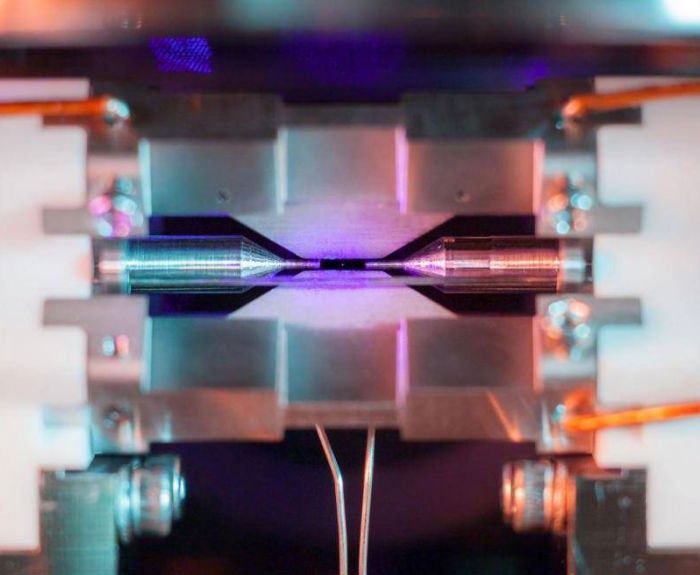 This awe-inspiring photo shows an atom as a speck of light sitting between two metal electrodes about 2mm (0.078in) apart. The image titled “Single Atom in an Ion Trap” was shot by David Nadlinger, a student at the University of Oxford. The U.K.’s Engineering and Physical Sciences Research Council (EPSRC) awarded the photo the top prize in its national science photography competition.
This awe-inspiring photo shows an atom as a speck of light sitting between two metal electrodes about 2mm (0.078in) apart. The image titled “Single Atom in an Ion Trap” was shot by David Nadlinger, a student at the University of Oxford. The U.K.’s Engineering and Physical Sciences Research Council (EPSRC) awarded the photo the top prize in its national science photography competition.
“In the center of the picture, a small bright dot is visible – a single positively-charged strontium atom. It is held nearly motionless by electric fields emanating from the metal electrodes surrounding it. […] When illuminated by a laser of the right blue-violet color, the atom absorbs and re-emits light particles sufficiently quickly for an ordinary camera to capture it in a long exposure photograph,” reads the photo caption.
David Nadlinger, The University of Oxford
32. My Scar Doesn’t Get Dirty When I’m At Work
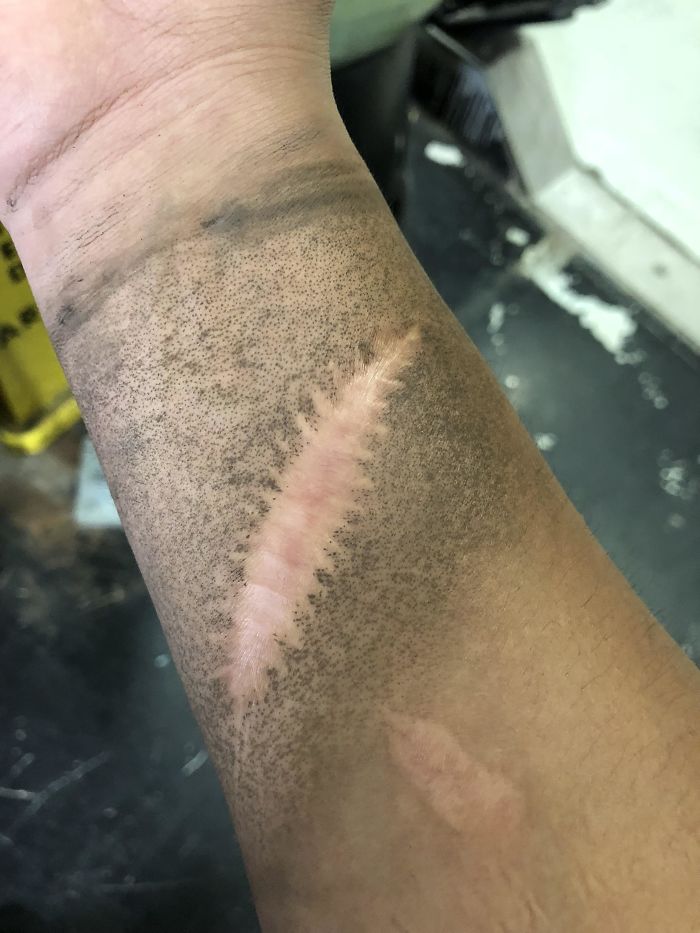 Sweat glands do not form in scar tissue which may assist in capturing the dirt. If the scar runs deep enough to replace the original tissue housed in the sweat glands, the sweat glands can’t regenerate. Therefore, heat intolerance is often expected in large-scale deep-burn survivors.
Sweat glands do not form in scar tissue which may assist in capturing the dirt. If the scar runs deep enough to replace the original tissue housed in the sweat glands, the sweat glands can’t regenerate. Therefore, heat intolerance is often expected in large-scale deep-burn survivors.
33. A Vinyl Puck Before It Is Pressed To Become A Record
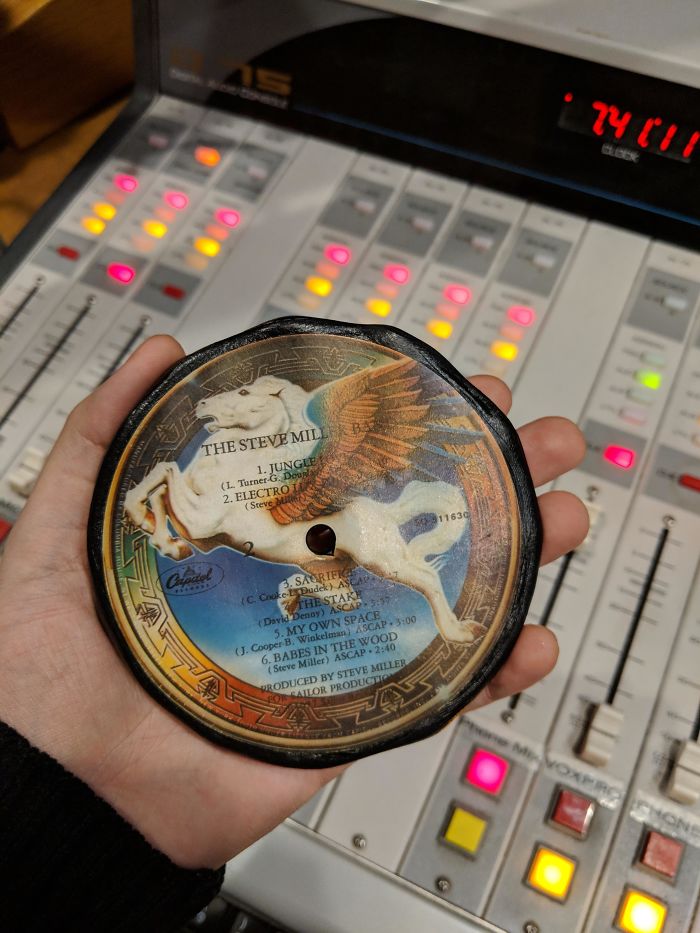 Records, L.P.s, vinyl, whatever you prefer to call them, haven’t just survived the digital streaming era but are thriving in it. There’s something about the smell, the artwork, the crackle as the needle finds its groove, and the rich depth of sound that resonates with music lovers. Records are still a thing and are being produced as much as ever. But how are they made? Daniel Terdiman, in an article for cnet, explains:
Records, L.P.s, vinyl, whatever you prefer to call them, haven’t just survived the digital streaming era but are thriving in it. There’s something about the smell, the artwork, the crackle as the needle finds its groove, and the rich depth of sound that resonates with music lovers. Records are still a thing and are being produced as much as ever. But how are they made? Daniel Terdiman, in an article for cnet, explains:
“First, the vinyl is melted down into what is called the biscuit. This is the record’s center, the round part with no grooves and the little hole. The label is added, which is pressed onto the biscuit, a step that doesn’t require any adhesive. Rather, the biscuit is so hot from the melted vinyl that the label sticks right on.” Then, the biscuit is placed in the middle of a machine, and then it is joined together with a fresh supply of vinyl, and they are smashed between a plate and the stamper. A blade then shears off the excess vinyl, and voila! A brand new record slides out of the machine and onto a rack.”
34. What The Verdun Battlefield Looks Like Now
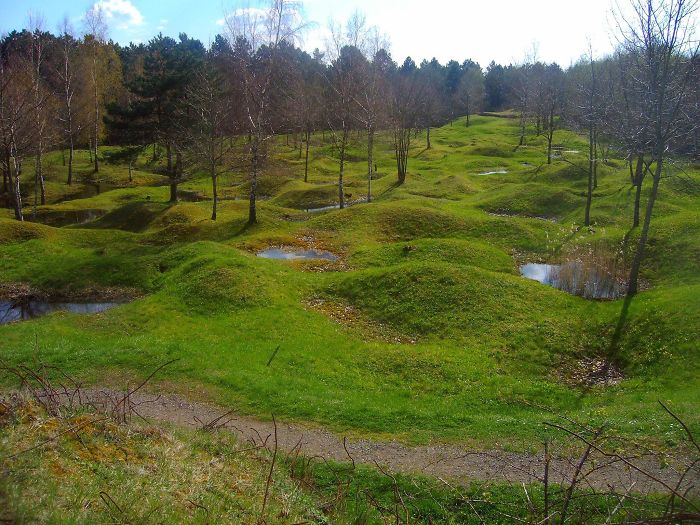 This peaceful-looking site was where the most extended battle of the First World War was fought. The Battle of Verdun was fought between German and French troops on the hills of North-Eastern France and lasted February 21bruaDecember 18cember 1916, a total of 303 days.
This peaceful-looking site was where the most extended battle of the First World War was fought. The Battle of Verdun was fought between German and French troops on the hills of North-Eastern France and lasted February 21bruaDecember 18cember 1916, a total of 303 days.
The concentration of so much fighting in such a small area devastated the land, resulting in miserable conditions for troops on both sides. Rain, combined with the constant tearing up of the ground, turned the area’s clay into a wasteland of mud full of human remains. Shell craters filled, becoming so slippery that troops who fell into or took cover in them could drown.
Forests were reduced to tangled wood piles by constant artillery fire and eventually obliterated. Although the Germans were held from taking Verdun itself, who won the battle is a question not all historians answer the same. In 2000, Hannes Heer and K. Naumann calculated 377,231 French and 337,000 German casualties, a total of 714,231, an average of 70,000 a month.
35. Sniper’s Nest At The Super Bowl
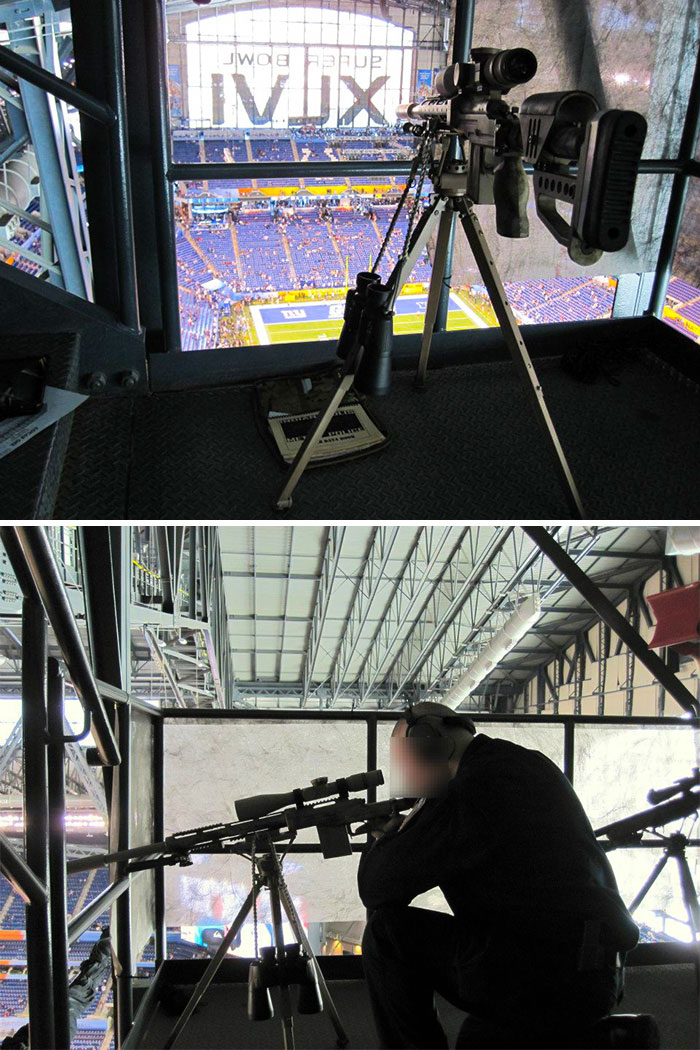
How does it feel to be at a major sports event or concert, knowing that a sniper could have his rifle trained on you at any given moment? Safer? Or less?
These guys are here to ensure that if someone goes berserk and undertakes a terrorist attack, they are in a position to stop it as quickly as possible. Sadly, this is just the world we live in.
36. This 50-Pound Lead Container That Held A Radioactive Pill My Mom Had To Take To Fight Off What’s Left Of Her Thyroid Cancer
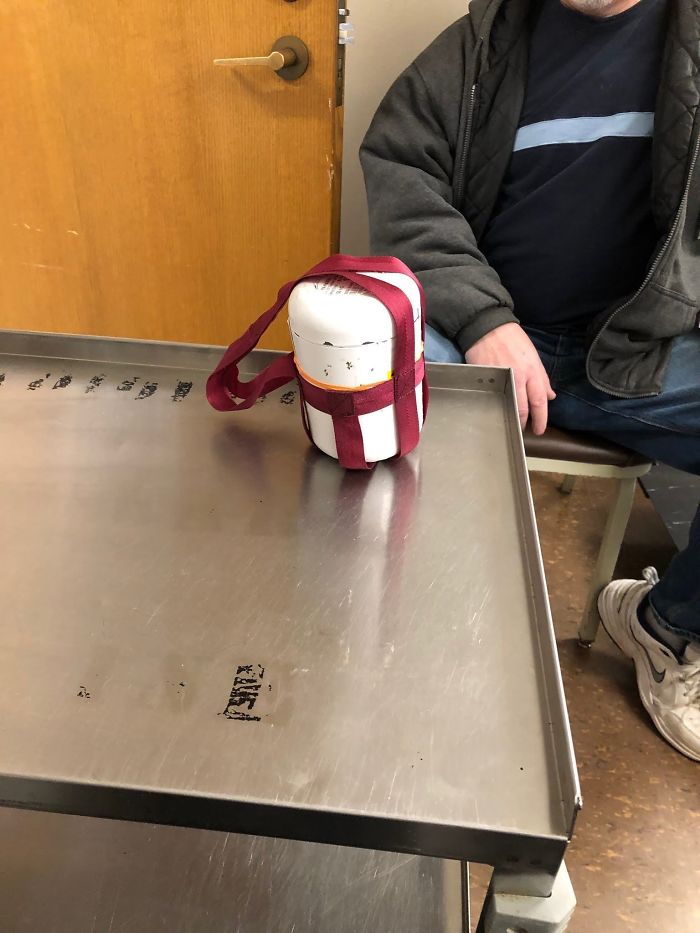 Radioactive iodine therapy can improve survival rates for people with papillary or follicular thyroid cancer. A thyroid gland absorbs close to all of the iodine in the body. For treatment, radioactive iodine (RAI), also known as I-131, can be taken as a liquid or a capsule. The RAI concentrates on in on the thyroid cells, and the radiation can destroy the thyroid gland or thyroid cells, including ones with cancer, that are taking up iodine in the body.
Radioactive iodine therapy can improve survival rates for people with papillary or follicular thyroid cancer. A thyroid gland absorbs close to all of the iodine in the body. For treatment, radioactive iodine (RAI), also known as I-131, can be taken as a liquid or a capsule. The RAI concentrates on in on the thyroid cells, and the radiation can destroy the thyroid gland or thyroid cells, including ones with cancer, that are taking up iodine in the body.
37. These Biscuit Presses
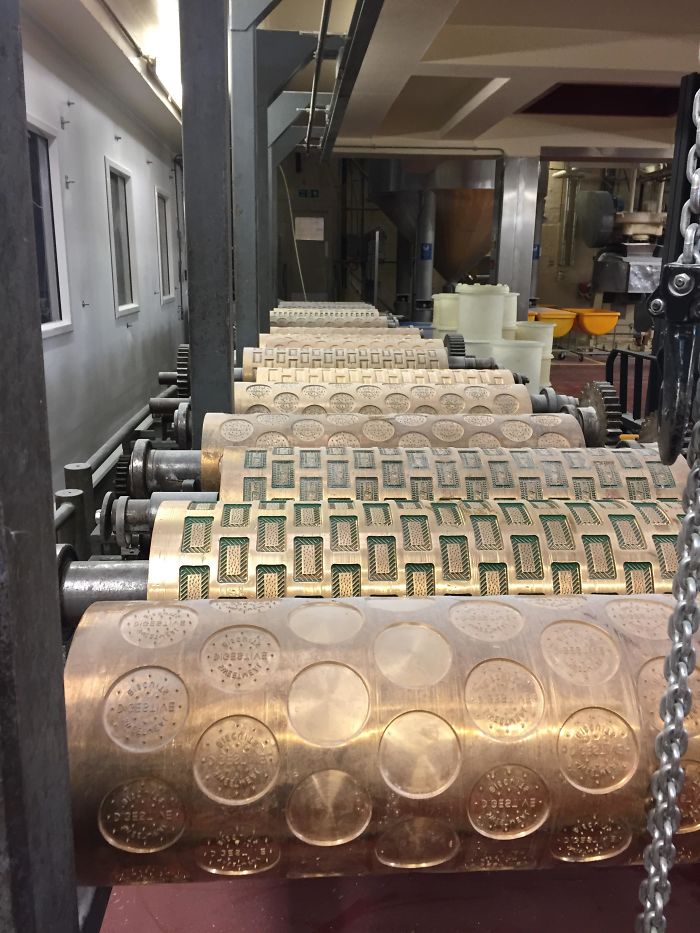 The Brits love their biscuits; if you’re invited to someone’s house in the U.K., you’ll likely be given a hot cup of milky tea and a tin of biscuits to peruse at your leisure.
The Brits love their biscuits; if you’re invited to someone’s house in the U.K., you’ll likely be given a hot cup of milky tea and a tin of biscuits to peruse at your leisure.
These presses are just that; they roll over the dough to create yummy biscuits. The front roller appears to be the classic digestive, a staple of any biscuit tin. “The digestive was first developed in 1839 by two Scottish doctors to aid digestion,” says Wikipedia. “The term “digestive” is derived from the belief that they had antacid properties due to the use of sodium bicarbonate when they were first developed.” Delicious.
38. This Is How Chinese Soldiers Keep Their Posture
 The Officers of the People Paramilitary Police were not playing around when it came to their training for the Beijing Olympics. The force underwent rigorous drills to ensure they could hold the perfect posture, including pins in their collars and crosses on their backs.
The Officers of the People Paramilitary Police were not playing around when it came to their training for the Beijing Olympics. The force underwent rigorous drills to ensure they could hold the perfect posture, including pins in their collars and crosses on their backs.
39. This Is What A Potato Storage Looks Like. Shovel Is Roughly 5 Feet Tall For Reference
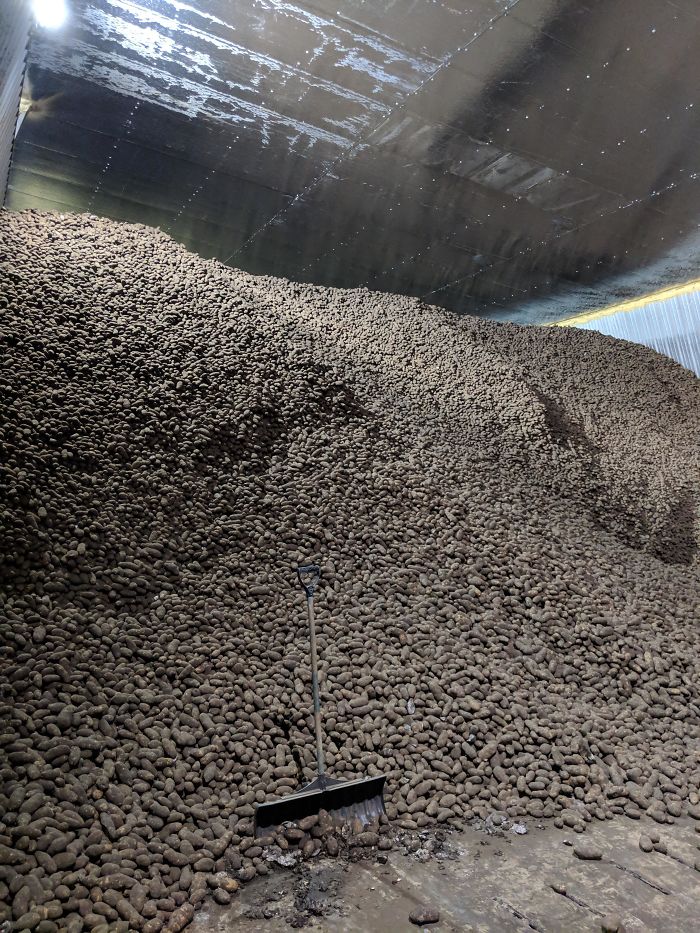 Here are some fun potato facts from the Northern Plains Potato Growers Association:
Here are some fun potato facts from the Northern Plains Potato Growers Association:
The potato originated in the Andes of Bolivia and Peru. It was there, in 1537, that the Spanish conquistadors discovered the potato. From there, it traveled to Europe and the United States. Peru’s Inca Indians first cultivated the potato in about 200 B.C. This vegetable had many uses for the Incas. Raw slices were placed on broken bones, carried to prevent rheumatism, and eaten with other foods to prevent indigestion. The ancient Inca Indians valued the potato as a food and a measure of time. Units of time were correlated to how long it took a potato to cook.
Potatoes are America’s favorite vegetable. Did you know that we consume about 110 pounds of potatoes per person? Europeans have us beat, though. They consume twice as many spuds as American potato lovers! The Potato Museum is located in Washington D.C. It contains over 2,000 potato artifacts, including antique harvesting tools, an 1893 potato flask (a mold for making ice cream potatoes), potato ties, and a 1903 Parker Brothers game called “The Potato Race.”
This is heaven; I need a deep fryer, oven, French fry cutter, and some deep fry oil, and I will be good!
Like what you’re reading? Subscribe to our top stories.













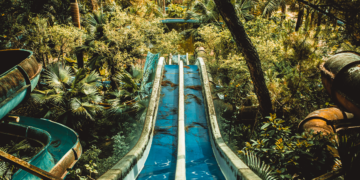



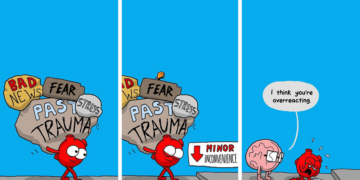



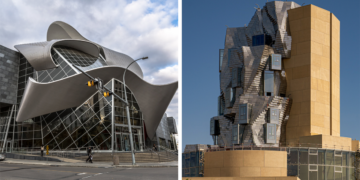

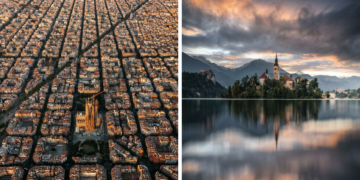
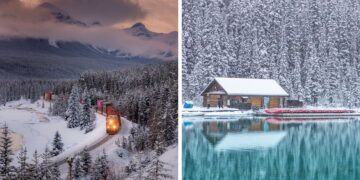
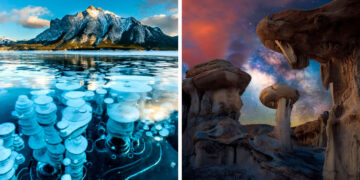

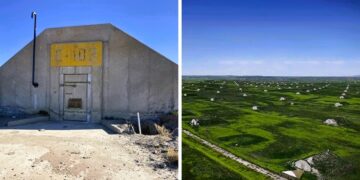


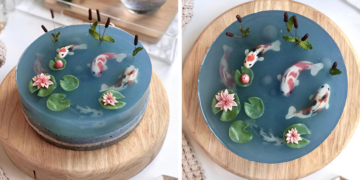

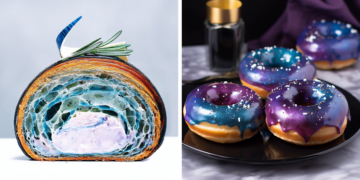










Discussion about this post